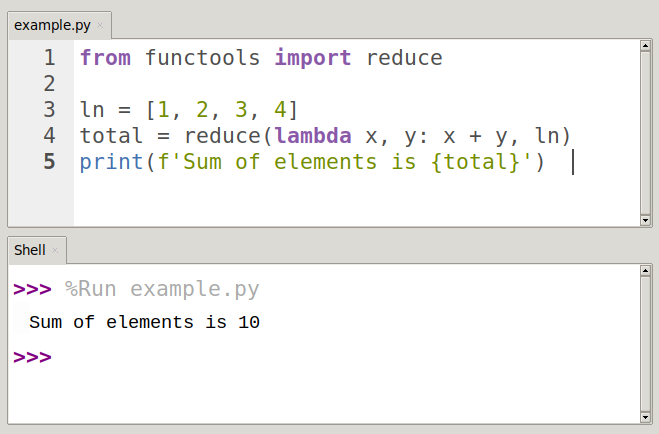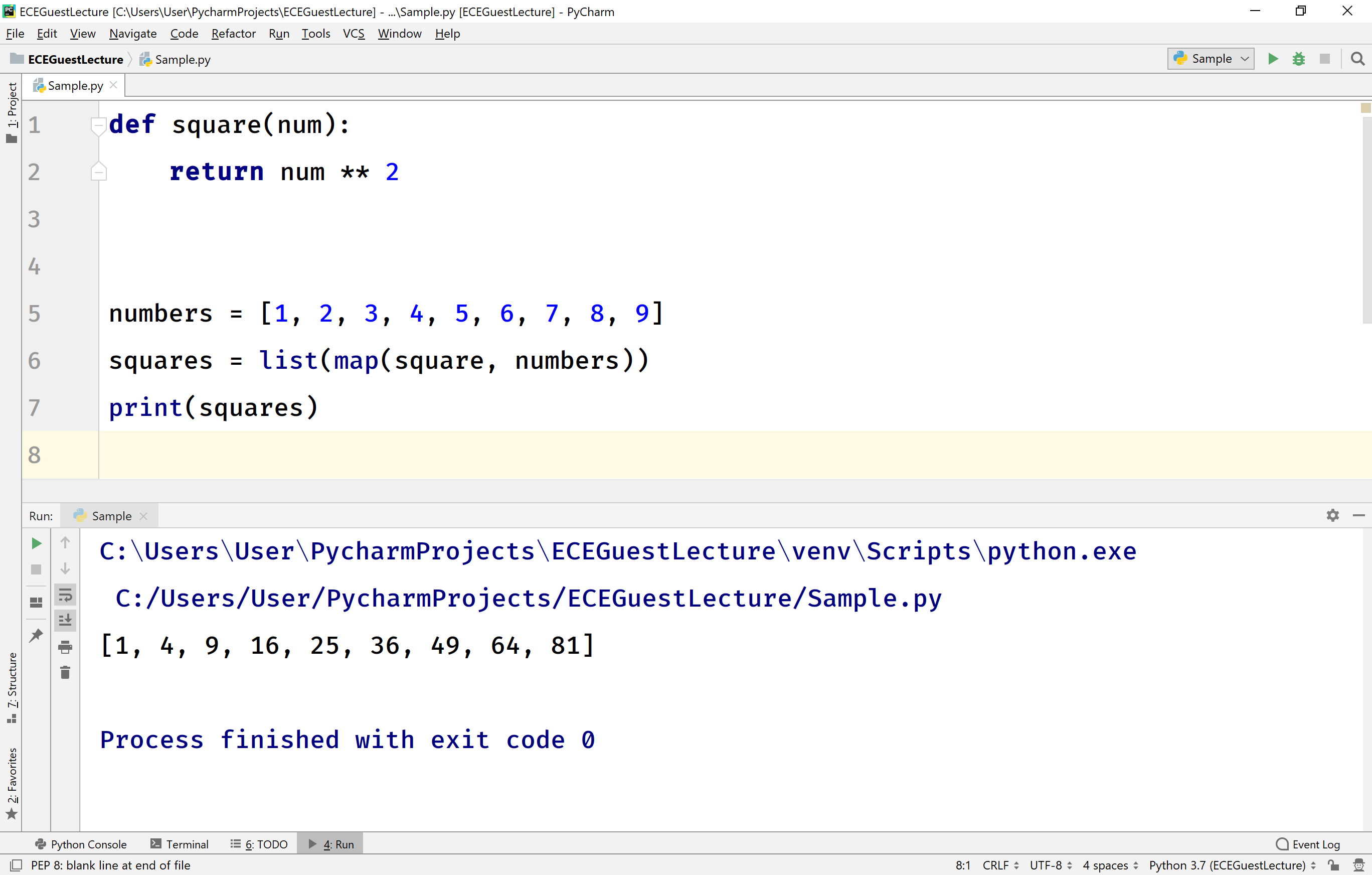

You cannot write multiple statements in the body of a lambda function.Ĥ. This is the body of the function, which adds the 2 parameters we passed. x and y are the parameters that we pass to the lambda function.ģ. The lambda keyword used to define an anonymous function.Ģ. Here, we define a variable that will hold the result returned by the lambda function.ġ. So, open your IDLE and type in the following: adder = lambda x, y: x + y Now that you know about lambdas let’s try it with an example. The last part (expression) is any valid python expression that operates on the parameters you provide to the function. However, notice that we do not use brackets around the parameters as we do with regular functions. You can add as many or few parameters as you need. Here, p1 and p2 are the parameters which are passed to the lambda function. The formal syntax to write a lambda function is as given below: lambda p1, p2: expression

In this Lambda in Python tutorial, you will learn: You will see all this in action in the upcoming examples.
#Python lambda code#
Moreover, a lambda is written in a single line of code and can also be invoked immediately.

Just like a normal function, a Lambda function can have multiple arguments with one expression. It is a small and restricted function having no more than one line. A Lambda Function in Python programming is an anonymous function or a function having no name.


 0 kommentar(er)
0 kommentar(er)
